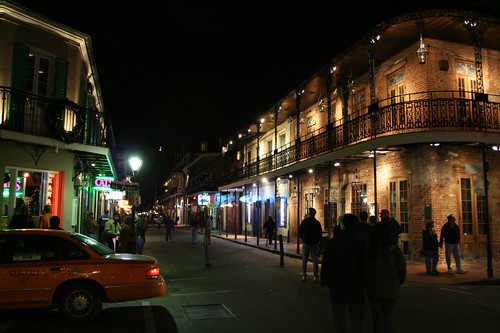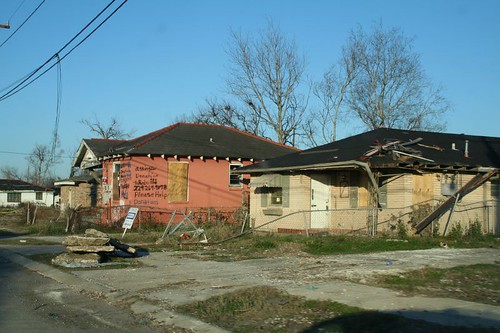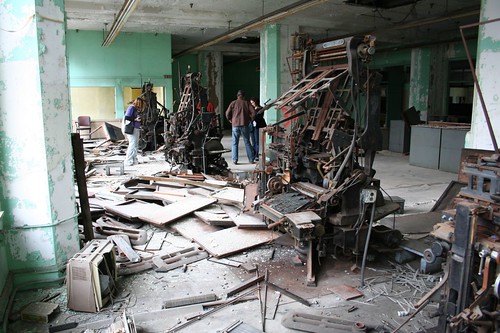On the Road in New OrleansI grew up in Shreveport, just five hours up the road from New Orleans, but it was a completely different world -- suburban, bland, vaguely Southern, with only the most distant hint of the Creole culture at the opposite end of the state. I visited New Orleans probably four or five times in high school -- mostly for swim meets, which meant I didn't see a whole lot of the city.

It wasn't till years later, on a 2002 visit, that I came to realize what a great city it was. I went back in 2004, and photographed heavily... but not in the outlying neighborhoods, which we only passed through briefly. It was a fantastic trip, a great time, a wonderful experience.
There's no place like New Orleans!Then came the hurricanes. From Milwaukee, I watched with anxiety and fury as the city was pummelled, as the levees fell, as the news media took their damn sweet time to realize and expose the magnitude of the calamity.

And to this day, I find myself dissatisfied with the mass media coverage of the disaster.
What state are the neighborhoods in? Where are the photographs? How is the recovery effort going? What are the plans for the city? The first question, at least, I could answer for myself. News media, even in the Internet age, are incredibly stingy with their photographs (I'm not -- there's over 500 on this tour.) I wanted to see what was left, what was damaged, to photograph the places of the city before some of them disappear forever.
Myself and three companions headed south the day after Christmas, and spent Wednesday and Thursday roaming the city. There were some restraints, of course; while my appetite and energy for urban exploration is virtually limitless, other people's is not. I didn't get to do everything I wanted.... but the same can be said of any trip to St. Louis.
I've always seen St. Louis as a kind of younger sister to New Orleans -- both river cities, both rooted in French history and Catholic culture, both with architecturally rich cores of red brick buildings, both with old souls, both with a history of jazz and blues music. Like St. Louis, it's a place that draws me back again and again -- a surprise around every corner, always something new to see. It's a city worth fighting for, a place that should be cherished and nurtured.
Up close and afar, I've fallen in love with this old, meandering city on the river; and having seen more of it than ever before, I've come to realize how much of it I still have yet to see.




